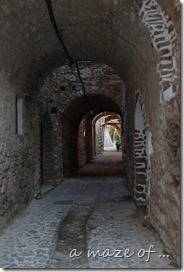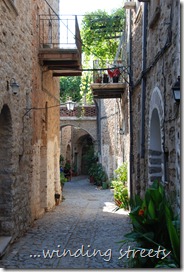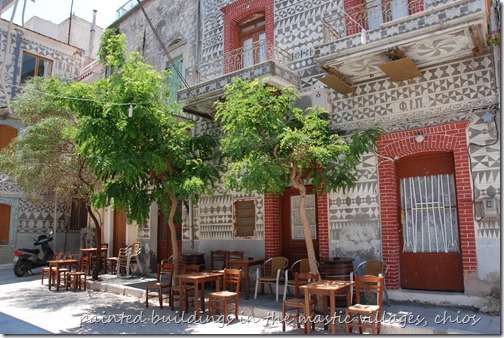
Not far off the Turkish coast, Chios was a good spot to take a break after sailing from the northern Sporades in mid July down to Mykonos in the Cyclades where we were meeting friends.
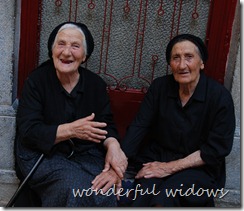
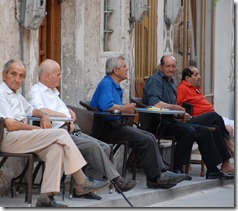
Leaving Skiros in the northern Sporades with a brisk meltemi, we had a wonderful sail to the tiny island of Psara where we anchored overnight. Psara has a tragic history being one of the first islands to revolt against the neighbouring Turks. But in June 1894 the Turks landed and massacred the entire population.
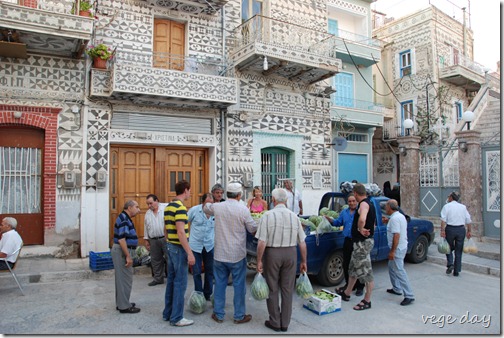
Next day we headed to Chios and spent one night anchored in the south west bay of Salagona. While there we went ashore and got talking to a local who told us we must visit the mastic villages. He gave us a sketchy description of them which triggered our curiosity. Getting there wasn’t easy though and he told us to head around to Emborios on the south east from where we could catch a bus.
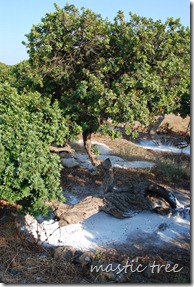
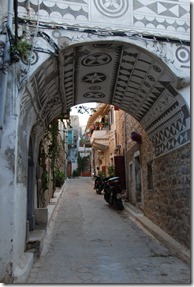
There were buses – one a day! We were determined and walked until we found a hotel which had car hire so we booked one for the next day. That night an Australian yacht turned up in the anchorage and we got chatting and discovered they were also interested in touring so we teamed up – making the cheap Greek car hire even cheaper.
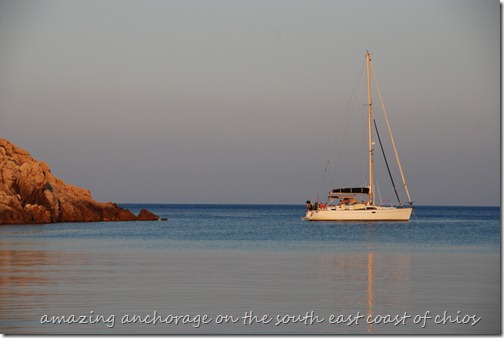
We headed off not really knowing what to expect and were pleasantly surprised. The mastic villages of Mesta and Pyrgi were built inland to protect the inhabitants from pirate raids and allow safe cultivation of the precious mastic tree. The mastic, which grows in incredibly inhospitable conditions, produces a resin which is used for medicinal purposes, confectionary, drinks and chewing gum.
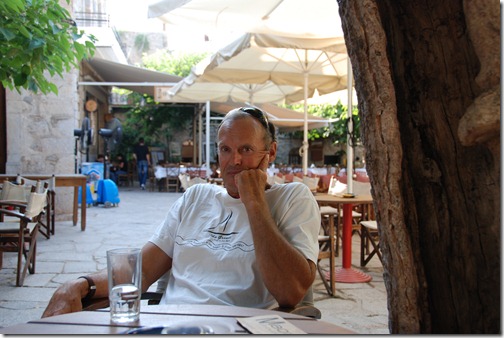
Residents in the mastic villages were spared during the Greek War of Independence (1821/22) when invading Turks murdered 25,000 islanders and enslaved a further 47,000. The Sultan of the time believed that the resin from the mastic tree was an aphrodisiac…ensuring its cultivation under Turkish occupation and the survival of the people who grew it.
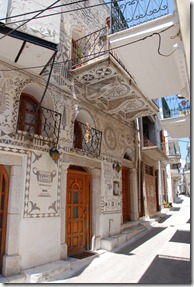
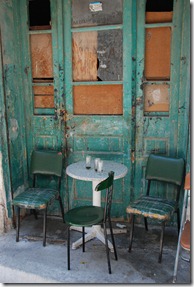
The villages are unique in Greece in that they are hand decorated with some amazing artwork. This is done by etching the surface with ash then whitewashing it. No two buildings are alike.

The first mastic village we visited was like a rabbit warren – a maze of winding streets built inside high walls with lookout turrets all designed to deter pirates. The theory being that if pirates did find the village they would then get lost inside the walls.
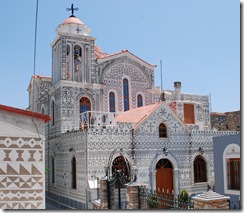
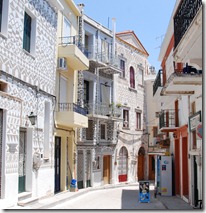
The next was more open but built in a valley almost hidden from view. We had a wonderful day exploring two of the three mastic villages at leisure. They were surprisingly non touristy and the locals were incredibly friendly. It was an absolute delight to visit them.
